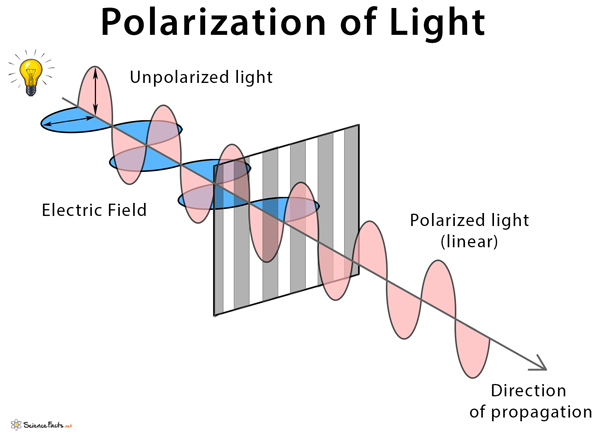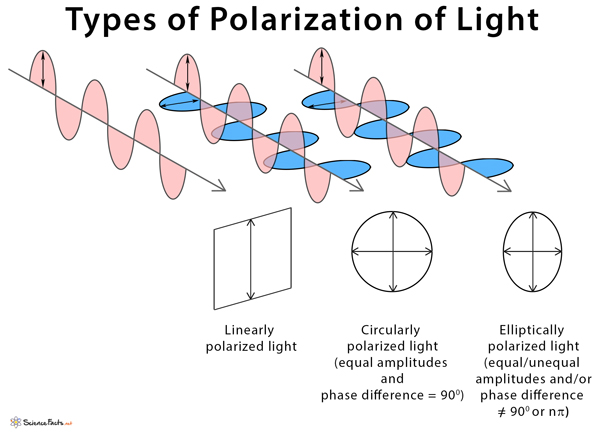Polarization of Light
Definition: What is Polarization of Light?
Natural sunlight, light emitted by a lamp, and any other source of artificial light consist of an oscillating electric field in a plane perpendicular to the direction of propagation. The electric field is vibrating in all directions in this plane. Such type of light is known as unpolarized light. However, when unpolarized light passes through a filter, the oscillations are confined along one line only. This phenomenon is known as polarization of light, or light is said to be polarized. The filter used for this purpose is known as a polarizer, which has an axis of transmission. The component of the electric field vector that oscillates parallel to this axis is transmitted, and the rest are blocked. Sometimes a second polarizer, known as an analyzer, is also used, and the associated law is known as Malus’ law of polarization.
The history of light polarization began with the Danish physicist, physician, and mathematician, Erasmus Bartholinus, who, in 1669, discovered the phenomenon of double refraction of calc-spar.
Examples of Polarization of Light
- The light reflected from the water surface forms glare making it difficult to see through.
- The view of the surroundings through polaroid sunglasses.
Types of Polarization
There are three types of polarization, depending on the orientation of the electric field.
- Linear polarization
- Circular polarization
- Elliptical polarization
Linear Polarization
In linear polarization, the electric field of light is restricted to a single plane along the direction of propagation.
Circular Polarization
In circular polarization, the electric field has two linear components that are perpendicular to each other such that their amplitudes are equal, but the phase difference is 90 °. The resulting electric field rotates in a circle around the direction of propagation. Depending on the rotation direction, it is called left- or right-hand circularly polarized light
Elliptical Polarization
In elliptical polarization, the electric field has two linear components that are perpendicular to each other. However, either their amplitudes are not equal, or their phase difference is not 90°.
Applications of Polarization
- Polarization is used in polaroid sunglasses to reduce the glare of sunlight. Light gets polarized while passing through a polaroid sunglass. For example, fishers use polarized glasses to spot the fishes in the water. Polarized sunglasses also reduce the glare of headlights of a car.
- Polaroid filters are used in plastic industries for performing stress analysis tests.
- 3-D movies are produced and shown with the help of polarization.
- Polarization is used to differentiate between transverse and longitudinal waves.
- Infrared spectroscopy uses polarization. This technique is called polarized infrared spectroscopy.
- In Chemistry, the chirality of organic compounds is tested using polarization techniques.
- Several insect species, mainly honeybees, are thought to employ polarized light in navigating to their destinations.
Article was last reviewed on Thursday, April 16, 2020









